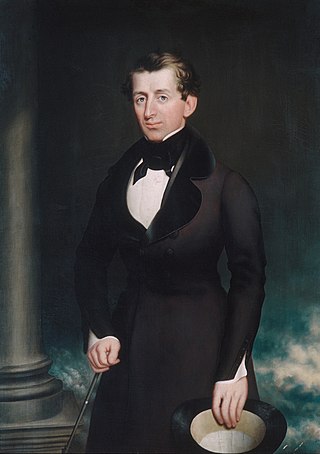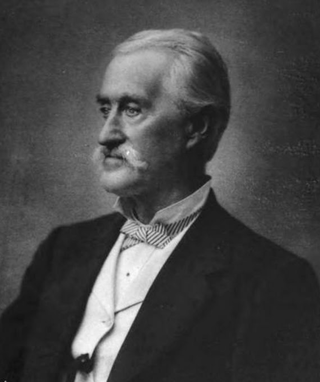Contested election
The Whig candidate James M. Cook was declared elected state treasurer with a majority of only 228 votes, but Attorney General Chatfield contested the result in the New York Supreme Court in favor of Welch, claiming that ballots with a name similar to that of the candidate Benjamin Welch, Jr., had been counted as "scattering" but had been intended for Welch. In fact the official state canvass shows ballots for "Benjamin Welch" in Chemung (68), Kings (1), Saratoga (1) and Tompkins (47), "B. Welch" in Chenango (1), Livingston (1) and New York (1), "B. J. Welch" in Livingston (1), and "Benjamin C. Welch, Jr." in Ontario (32); a total of 153. On the other side, the official canvass also shows votes for "J. M. Cook" in Kings (1), "J. W. Cook" in Livingston (2), "Cook" in New York (2), "James Cook" in Saratoga (1), "James A. Cook" in Suffolk (15) and "John M Cook" in Yates (1), a total of 22. Besides, votes from several election districts were disallowed on technicalities (49 for Welch and 24 for Cook in Chesterfield, Essex County, New York; 332 for Welch and 66 for Cook in the second election district of the 14th Ward in New York City). On September 30, 1852, the election result was reversed by the Supreme Court, but Cook refused to deliver the office and the books. Welch sued for the delivery of the books, but the motion was denied. After some more legal proceedings, Welch took office as Treasurer for the remainder of the term on November 20, 1852.
New York is a Democratic stronghold and is considered one of the "Big Three" Democratic strongholds alongside California and Illinois. The following table indicates the party of elected officials in the U.S. state of New York:

The 1908 New York state election was held on November 3, 1908, to elect the governor, the lieutenant governor, the Secretary of State, the state comptroller, the attorney general, the state treasurer, the state engineer and a judge of the New York Court of Appeals, as well as all members of the New York State Assembly and the New York State Senate.

The 1894 New York state election was held on November 6, 1894, to elect the governor, the lieutenant governor and a judge of the New York Court of Appeals, as well as all members of the New York State Assembly. Besides, a new State Constitution and four other constitutional amendments were proposed to the electorate, and were all accepted. Furthermore, the inhabitants of New York County and adjacent communities were asked if they wanted to join the proposed enlarged New York City, a project known as The Consolidation.

The 1852 New York state election was held on November 2, 1852, to elect the governor, the lieutenant governor, a Canal Commissioner and an Inspector of State Prisons, as well as all members of the New York State Assembly.

James Merrill Cook was an American businessman, banker and politician.
Benjamin Welch Jr. was an American politician.

The 1849 New York state election was held on November 6, 1849, to elect the Secretary of State, the State Comptroller, the Attorney General, the State Treasurer, the State Engineer, a Judge of the New York Court of Appeals, a Canal Commissioner and an Inspector of State Prisons, as well as all members of the New York State Assembly and the New York State Senate.

The 1853 New York state election was held on November 8, 1853, to elect the Secretary of State, the State Comptroller, the Attorney General, the State Treasurer, the State Engineer, two Judges of the New York Court of Appeals, a Canal Commissioner, an Inspector of State Prisons and the Clerk of the Court of Appeals, as well as all members of the New York State Assembly and the New York State Senate.

The 1855 New York state election was held on November 6, 1855, to elect the Secretary of State, the State Comptroller, the Attorney General, the State Treasurer, the State Engineer, two judges of the New York Court of Appeals, a Canal Commissioner and an Inspector of State Prisons, as well as members of the New York State Assembly and the New York State Senate.

The 1887 New York state election was held on November 8, 1887, to elect the Secretary of State, the State Comptroller, the Attorney General, the State Treasurer and the State Engineer, as well as all members of the New York State Assembly and the New York State Senate.

The 1889 New York state election was held on November 5, 1889, to elect the Secretary of State, the State Comptroller, the Attorney General, the State Treasurer, the State Engineer and a judge of the New York Court of Appeals, as well as all members of the New York State Assembly and the New York State Senate.

The 1895 New York state election was held on November 5, 1895, to elect the Secretary of State, the State Comptroller, the Attorney General, the State Treasurer, the State Engineer and a judge of the New York Court of Appeals, as well as all members of the New York State Assembly and the New York State Senate. Besides, the voters were asked if they approved of the State's issuing bonds for $9,000,000.00 to spend on canal improvements, which the electorate answered in the affirmative.

The 1852–53 United States Senate elections were held on various dates in various states, coinciding with the 1852 presidential election. As these U.S. Senate elections were prior to the ratification of the Seventeenth Amendment in 1913, senators were chosen by state legislatures. Senators were elected over a wide range of time throughout 1852 and 1853, and a seat may have been filled months late or remained vacant due to legislative deadlock. In these elections, terms were up for the senators in Class 2.
The 1854 United States House of Representatives elections in New York were held on November 7, 1854, to elect 33 U.S. Representatives to represent the State of New York in the United States House of Representatives of the 34th United States Congress, and two representatives to fill vacancies in the 33rd United States Congress.

The 64th New York State Legislature, consisting of the New York State Senate and the New York State Assembly, met from January 5 to May 25, 1841, during the third year of William H. Seward's governorship, in Albany.

The 65th New York State Legislature, consisting of the New York State Senate and the New York State Assembly, met from January 4 to September 7, 1842, during the fourth year of William H. Seward's governorship, in Albany.

The 67th New York State Legislature, consisting of the New York State Senate and the New York State Assembly, met from January 2 to May 7, 1844, during the second year of William C. Bouck's governorship, in Albany.

The 69th New York State Legislature, consisting of the New York State Senate and the New York State Assembly, met from January 6 to May 13, 1846, during the second year of Silas Wright's governorship, in Albany.

The 74th New York State Legislature, consisting of the New York State Senate and the New York State Assembly, met from January 7 to July 11, 1851, during the first year of Washington Hunt's governorship, in Albany.

Alexander Lynn Collins was an American lawyer, judge, and politician. He was an important leader of the Whig Party in the early years of Wisconsin, serving as party chairman, nominee for United States Congress, for United States Senate, and for Governor of Wisconsin. He also served as a Wisconsin Circuit Court Judge and a member of the University of Wisconsin Board of Regents. In historical documents, his middle name is sometimes spelled "Linn" and he is sometimes referred to as "A. L. Collins."








